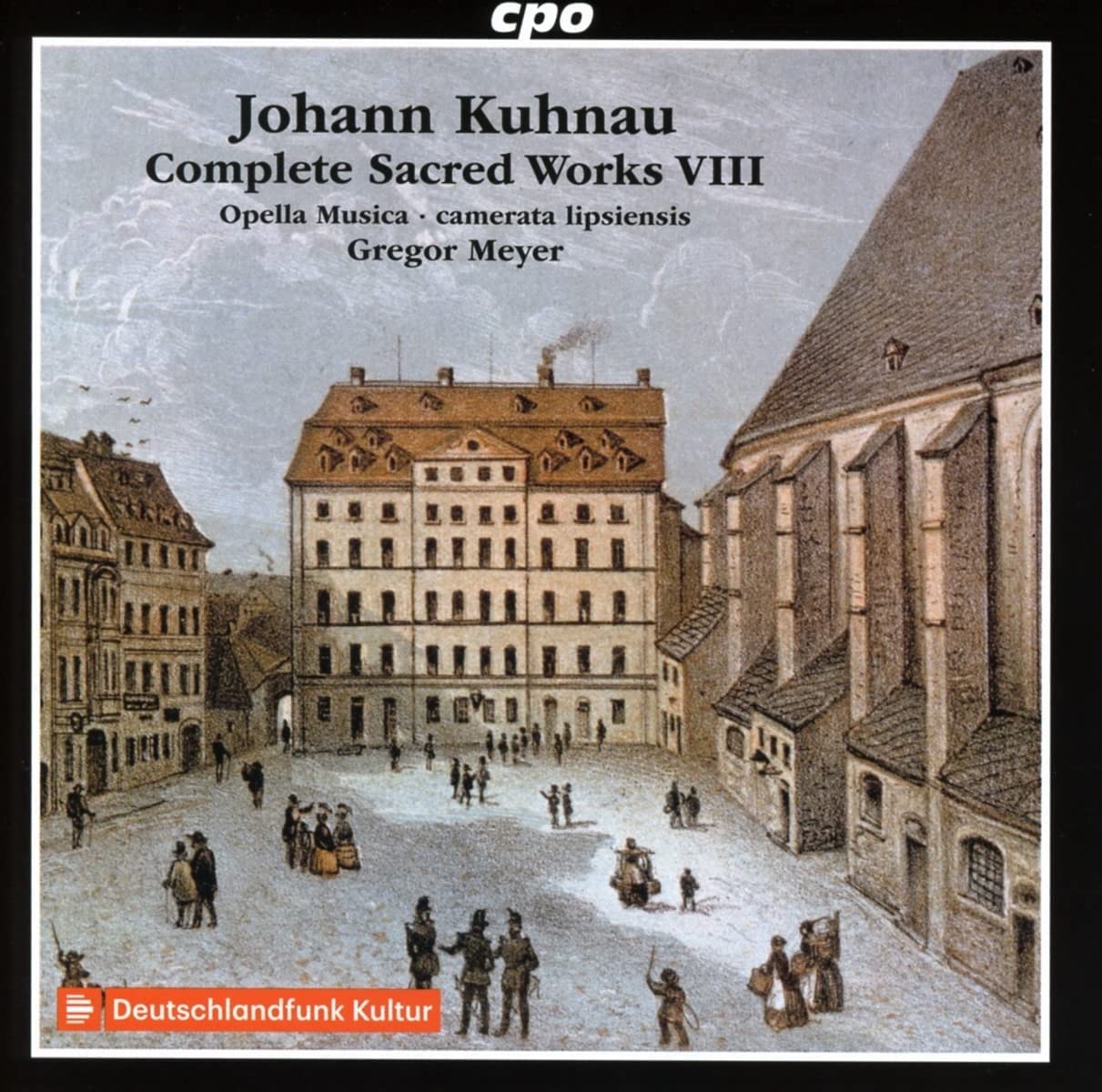Opella Musica, camerata lipsiensis, Gregor Meyer
71:20
cpo 555 460-2
Although the title announces that this is Vol VIII of the Complete Sacred works, this final volume in the eight-CD set of all Kuhnau’s surviving vocal music is entitled ‘Complete Vocal Works Vol. 8’. The last volume I saw was 5, which I reviewed in Feb of 2020, since then Vol. 6 appeared in 2021 and Vol. 7 must have come in since. By contrast with all the earlier CDs, the contents of this final one are largely secular.
Christian Weise, the head of the Gymnasium at Zittau, was Kuhnau’s teacher and mentor, and Weise elaborated the potentially dramatic stories of the entwined relationships between the patriarchal families in the chapters of Genesis as school plays, providing a part for every student. As a 22-year old, Kuhnau was holding the musical fort in Zittau, and his music for this play Von Jacobs doppelter Heyrath (Zittau, 1682) survives in Weise’s collected works.
They are insertions not unlike Purcell’s The Fairy Queen and King Arthur. As well as these dramatic settings, there is a setting of Psalm 3 (which Purcell set likewise as Jehova, quam multi sunt hostes), Ende gut und alles gut – an extended setting of a Neumeister text for soprano, bass, violin and continuo, a group of three arias, perhaps for an outside celebration, and a Latin chamber cantata for two sopranos and bass with two violins and continuo in a rather Italianate style. These forays into a consciously more secular style are less interesting to me than the cantatas, whose influence on the style and performance of Bach’s cantatas is significant. But it is good that they are included in the project.
The performances remain immaculate both in conception and execution. Meyer has worked with essentially the same musicians over this past eight years, and David Erler, the group’s alto, is indeed preparing the material for publication by Breitkopf. In an interview in the liner notes, he comments on the richness and diversity of the instrumental accompaniments, noting horns, oboes and a transverse flute, virtuoso writing for trombone, and a surprise scoring including schalmei, trombone, a harp and an echo chorus.
The net result is a homogenous blend, where single strings and single voices with a rich variety of wind are backed by the splendid Silbermann organ in Rötha, together with harp and lute in the continuo group. The clarity of the sound is wonderful: every word is clearly projected. In the secular pieces, the style is perhaps more ‘theatrical’ than in the cantatas, but that is hardly surprising and the rather lightweight text does need some boost.
This great undertaking will, I hope, remain the benchmark for all performances of Kuhnau in the future. The complementary style of singing and playing is a model, and anyone interested in learning about the background to performing Bach cantatas needs to listen carefully to both Kuhnau’s compositional techniques as well as the performance style of this excellent project, led by Gregor Meyer.
David Stancliffe
